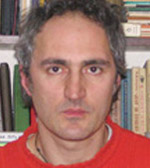He has not only been a witness of the horrific events in Turkey, but he has also left Turkey with some photographs taken by him and his German spies. The world found out about the Armenian Genocide thanks to Wagner’s photos and letters. Wagner was exiled from Turkey, being accused of “state betrayal”. Wagner has met with Hitler in Germany and it was he whom Hitler said: “Who remembers the Armenian Genocide now?” Half Jew Wagner was sent to a concentration camp by the order of Hitler and in some way has been part of the tragic Armenian destiny.
Ninety years after the Genocide, we can say that Wagner’s work is not truly appreciated. After all, there are few documental films which depict the dark days that we have gone through as a nation. Cinematographer Tigran Khzmalyan has prepared a film based on Wagner’s photos and letters. He has decided to show journalists in the beginning of the film entitled “Armin Wagner-artist of the Genocide” in order to create the right environment. Tigran Khzmalyan is sad that he was not able to finish his film in April and show it internationally due to being fired from the position of owner of “Yerevan” studios. He is worried about what destiny his film will have and says: “I am doing what the state should have done.” This film is not a request; it is a low budget film and has been filmed at Khzmalyan’s personal “Ainemra” studio. The main part of the film is based on photos and cinema chronology. As for the text, the letters sent to different organizations, President of the United States Woodrow Wilson, and even Hitler form the basis. “Many letters written by Wagner have not been printed; they are not even translated,” says the director. “I have collected them from the archives and libraries and have translated them myself due to lack in finances.”
The photos are the silent witnesses of the Genocide and when you look at them, you get crushed. “People die from all possible deaths in all times,” writes Wagner. Tigran Khzmalyan has shown pictures of skulls, tortures, “children with opaque eyes,” and starving people to the Armenian nobility of Turkey and has followed by showing photos of working Armenian families. Our compatriots look at the future with expressive faces, beautiful and high-class clothes. Thousands of destinies….the film is very impressive, the professionally edited scenes take you back to history. If the text corresponded to the scenes, the film would win more from that. The director himself reads the text. His speech will be heard in the English and Russian versions. The end of the film is filled with optimistic views. “Someone must pay for the damage caused,” says Wagner. “Someone just had to make this film,” says Khzmalyan. We need many high-class and emotional films similar to this one so that we can present each page of our history to the world.

